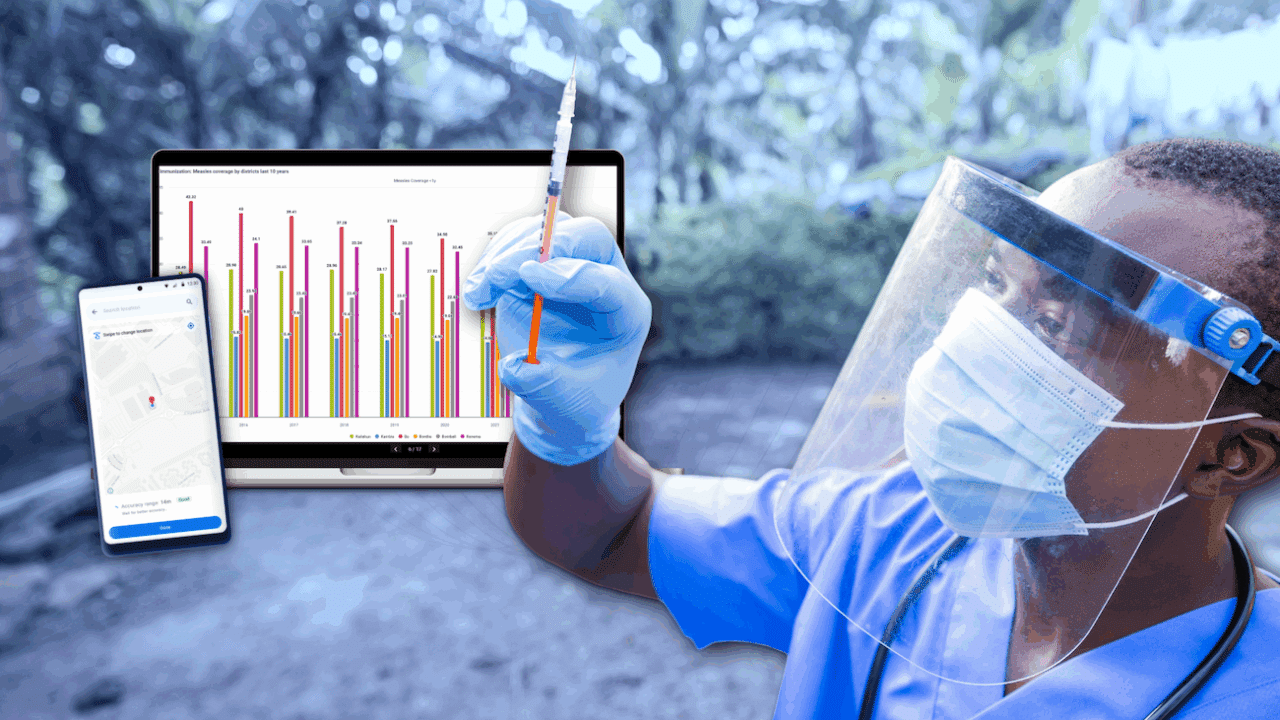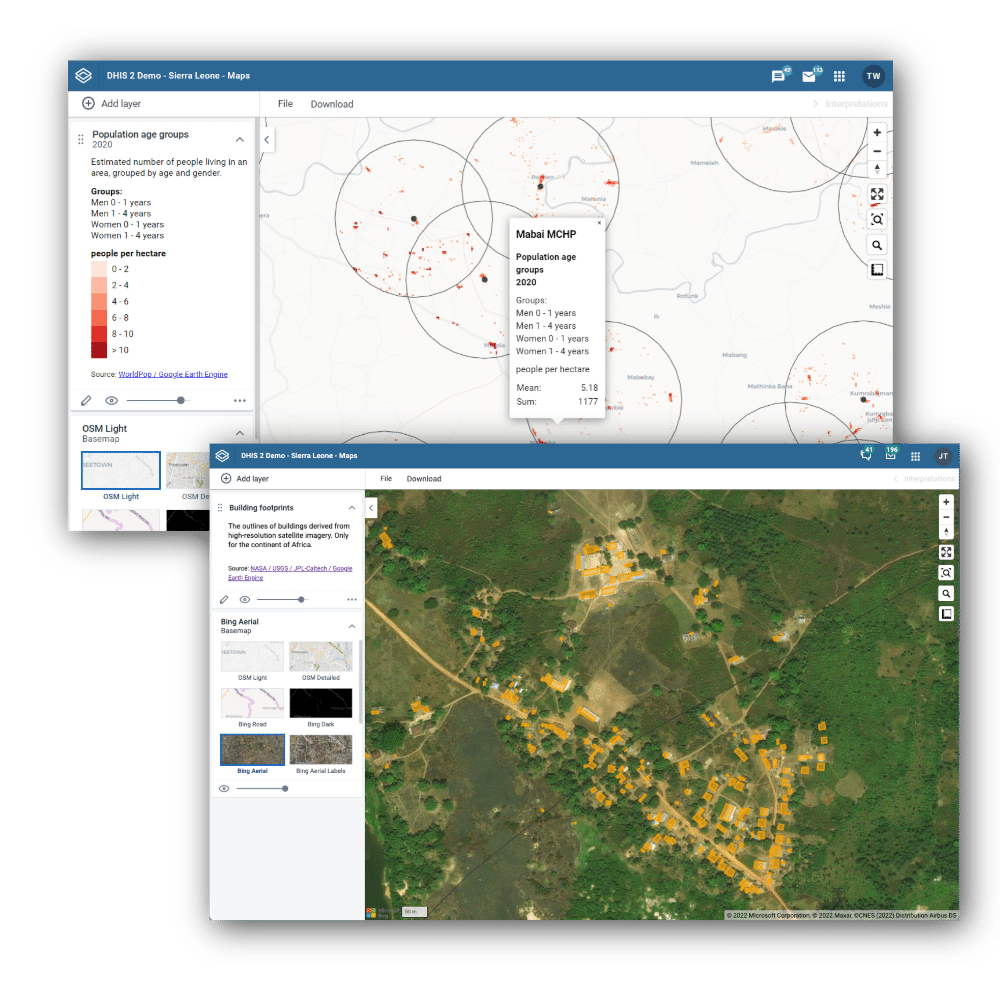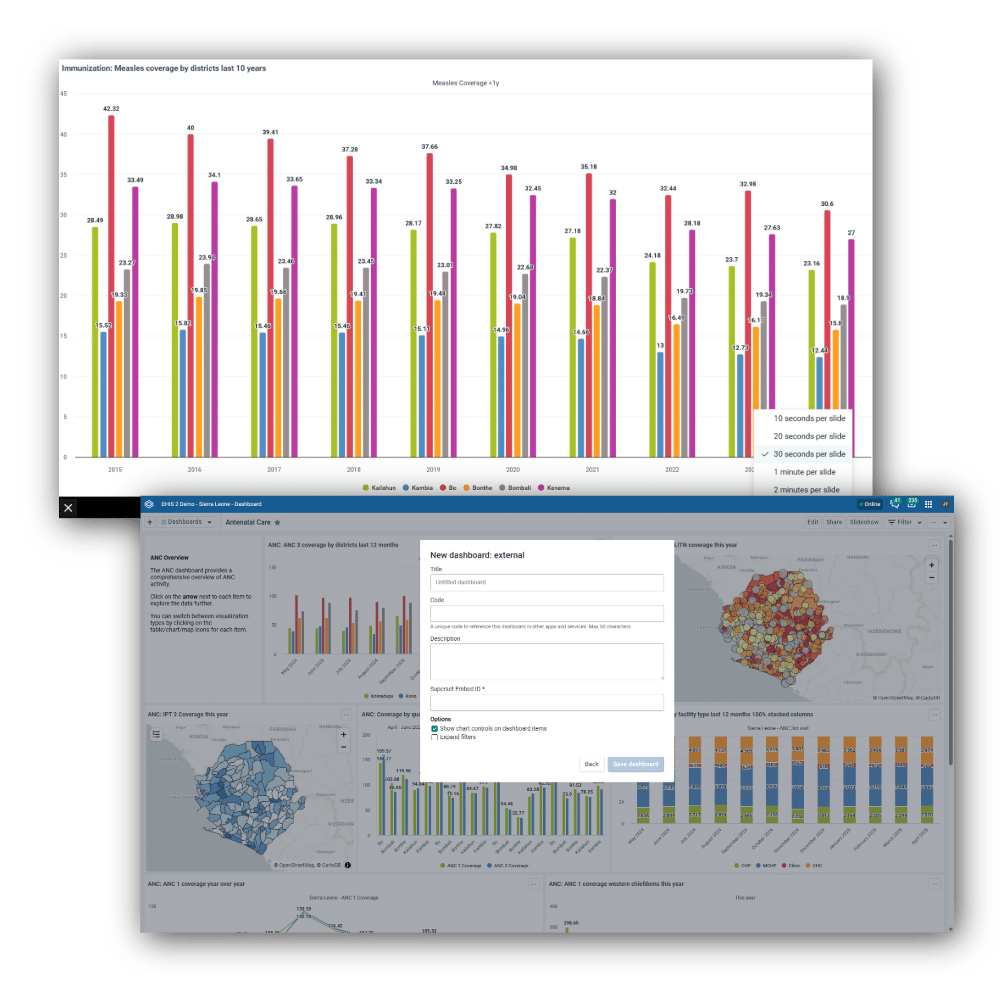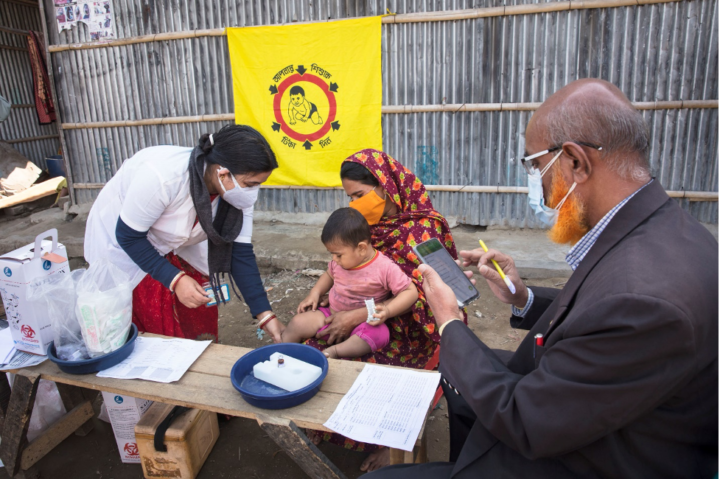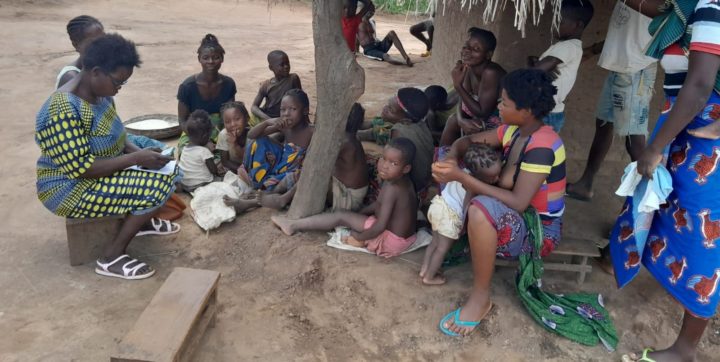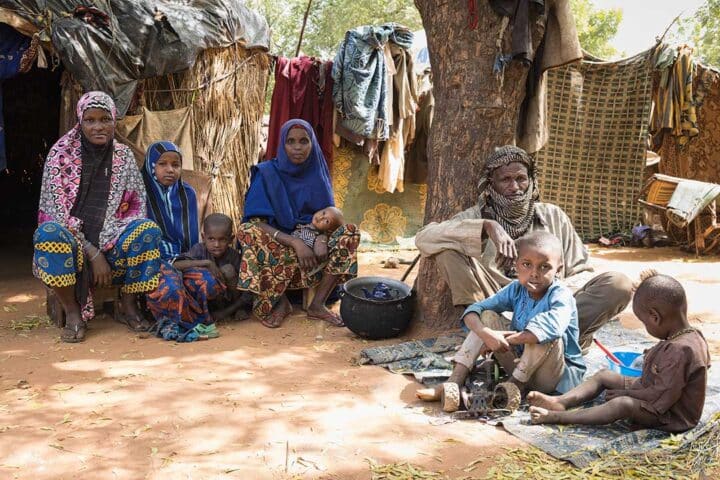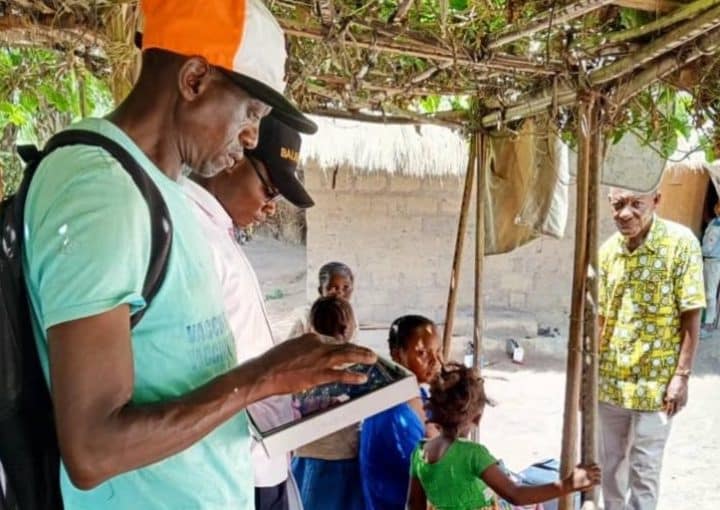Digital tools and platforms like DHIS2 have enormous potential for streamlining health campaign data collection and real-time monitoring, as well as supporting functions during the pre-campaign planning phase, real-time monitoring, post-campaign evaluation and integration of campaign data with routine service delivery data to assess coverage and identify gaps. As a scalable, flexible platform, DHIS2 can serve as the backbone for integrated health campaign data and be effectively used for a range of campaign interventions: supplemental immunization activities (SIA), insecticide-treated net (ITN) distribution, seasonal malaria chemoprevention (SMC) and other types of mass drug administration (MDA), indoor residual spraying (IRS), nutritional supplements and more.
DHIS2 is recognized as a fit-for-purpose global good in UNICEF’s Digital Tool Selection Guidebook for Health Campaigns and has been used as a digital health campaign platform by more than 25 Ministries of Health. The DHIS2 Health Campaign Toolkit provides practical tools and guidance to help countries adopt an integrated digital campaign approach, as recommended by the WHO. On this page, you can explore DHIS2 features and resources for health campaign digitalization, read real-life examples of how countries have improved campaign effectiveness using DHIS2, and access free resources that can help you apply these tools and best practices to your own health campaigns.
